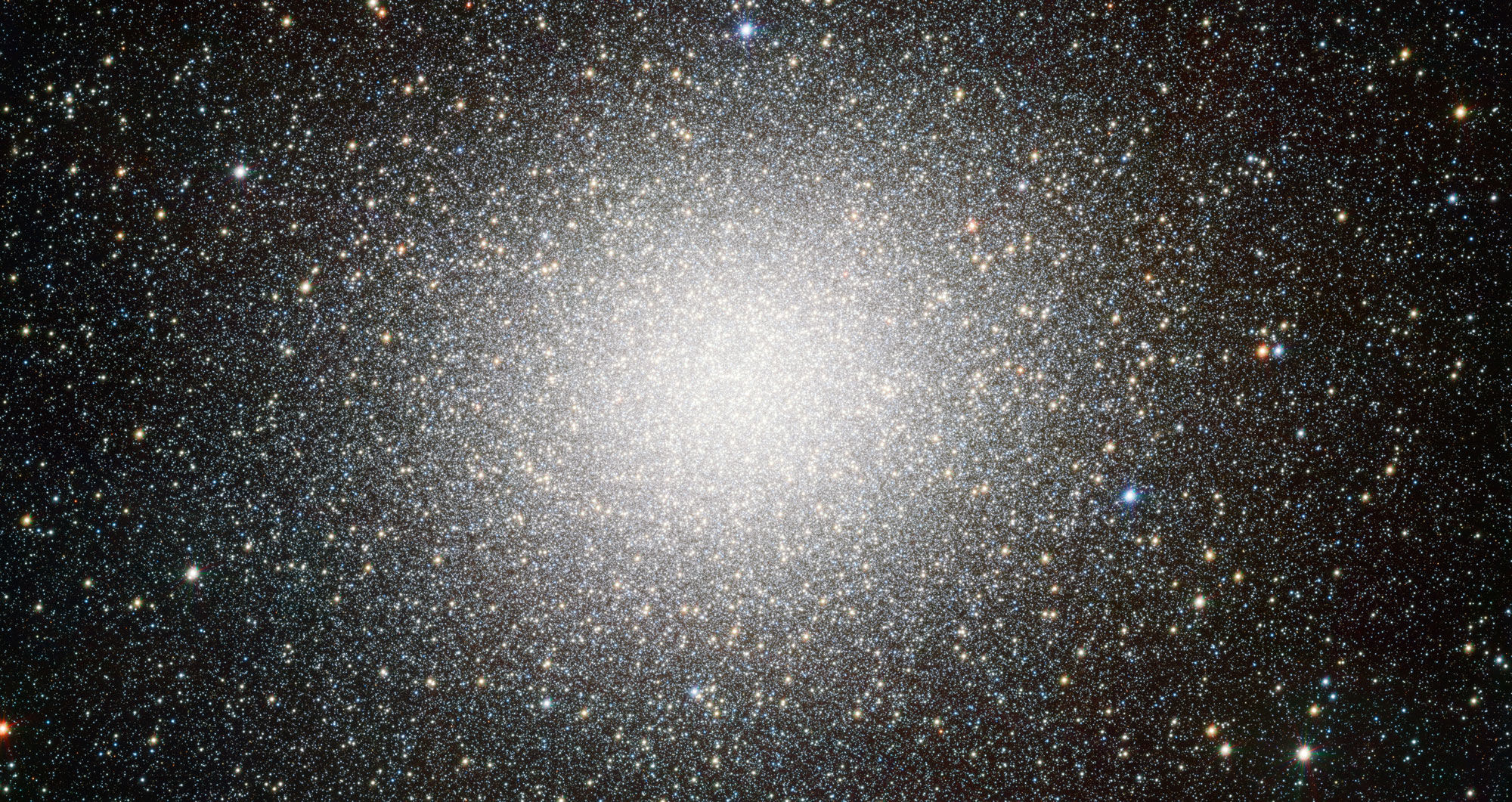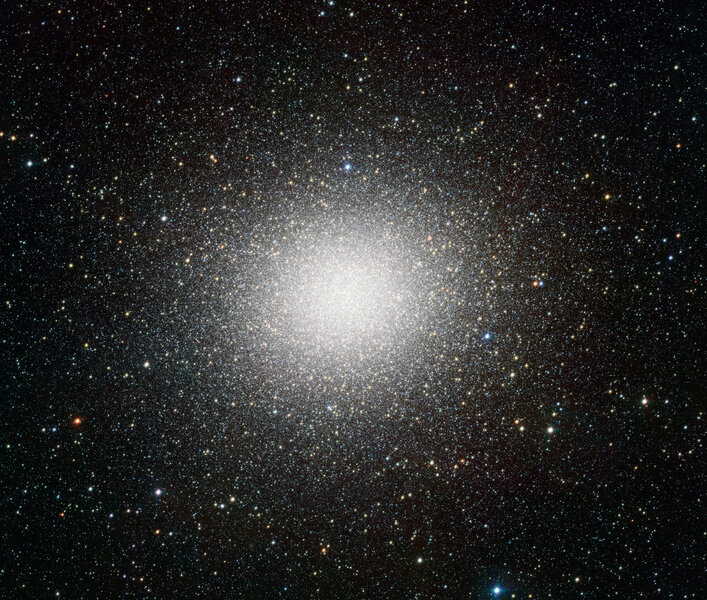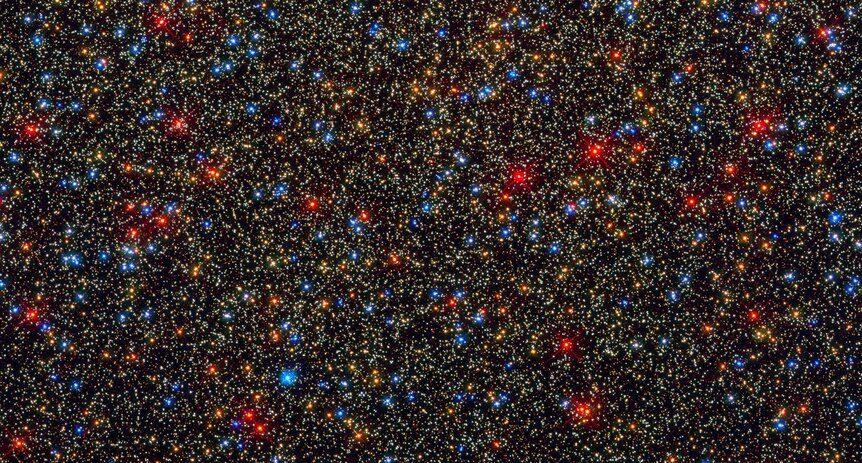Create a free profile to get unlimited access to exclusive videos, sweepstakes, and more!
The last place to look for planets: Omega Centauri

I've always dreamed of standing on a planet in a globular cluster, waiting for the local sun to set, and watching in awe as the stars come out by the thousands, the millions, with dozens of them scattered across the sky bright enough to cast shadows.
Sadly, it looks like that may likely remain a dream: A new study shows that stars in globular clusters are unlikely to have any planets. The reason? All the other stars in the cluster tear them away.
Yikes. And I'm not even being overly dramatic.
OK, first, what's a globular cluster? These are collections of hundreds of thousands or even millions of stars, held together by the combined gravity of those stars. Despite their bustling population, globulars are generally small, just a few dozen light years across.
And that, it turns out, is their planetary downfall.
Astronomers have looked for planets orbiting stars in globulars for a long time. For one thing, having a zillion stars all in one place makes it easier to look; if you're using the transit method, for example — looking for small dips in star brightness as a planet passes in front of its host star once per orbit — you can search for a lot of planets all at the same time.
So far, all these searches have turned up planetless. Now we may know why.
The new research looks at how likely a planetary system can exist given how tightly packed the stars are. As a way to improve the odds of such a system existing, they decided to look at only low mass stars, ones that are smaller and cooler than the Sun. The reasoning is that such stars are more likely to have small, compact planetary orbits; we see this quite a bit with such stars. The most famous is TRAPPIST-1, a red dwarf with seven roughly Earth-sized planets all with orbits so small they can fit in between the Sun and Mercury! It would take a pretty close encounter to knock that system off its track.
The astronomers used some very deep Hubble observations of the globular Omega Centauri, the largest such cluster of the 150 or so orbiting our Milky Way galaxy. It's hard to know exactly how many stars are in it, but estimates range upward of ten million stellar citizens. It's also big for a globular, probably over 100 light years across. Interestingly, it's unclear if it formed as a globular cluster initially or if it started out life as a dwarf galaxy that got disrupted by our galaxy's gravity.
The Hubble observations used in this study, besides being absolutely gorgeous, contain the core of the cluster and show something 470,000 stars in total. That's a lot.
Too many, in fact. Omega Centauri is old, probably something like 11.5 billion years old. That's a problem, because after all that time even stars like the Sun in the cluster have died. When they do, they expand into red giants, blow off their outer layers, and then fade away as tiny, hot white dwarfs. Since the astronomers wanted only very low mass stars (which should still be on the main sequence; that is, still merrily fusing hydrogen into helium in their cores like the Sun does now) they looked at the colors of the stars in the sample and eliminated ones that didn't match the profile of healthy, still-living stars.
That still left them with 350,000 stars or so. Good enough!
Then, for each star, they calculated the size of the "habitable zone", the distance from the star where, using some simple assumptions, a planet would be likely to have the right temperature to have liquid water on its surface. It's possible to have habitable worlds farther out from the stars than this (for example, in our own solar system, moons of Jupiter and Saturn have liquid water oceans under their surface), but as you'll see in a moment they don't matter.
The average system, they found, was around a star 0.4 times the mass of the Sun, and the habitable zone reached out to about half the distance of the Earth to the Sun, roughly 75 million kilometers.
With that in hand, they then asked themselves: Given how tightly packed stars are in the cluster, how often will a neighboring star pass so close to a given system that the gravity of that star will wreak havoc upon it, disrupting the planets' orbits and destroying the system?
It's a fair question. The stars near the core of the cluster are, on average, a mere 1/6th of a light year apart! That's close. The nearest star to the Sun, Proxima Centauri, is about 4 light years away, and that's about average for stars at our location in the Milky Way. Globular clusters are tight.
Mind you, that's on average. They then did the math to look at how often stellar encounters occur, and the numbers they came up with jolted me. For any given star, you expect another star to pass within 75 million kilometers about once every 1.6 million years.
Holy crap. That's incredible. This means that over a star's lifetime, it'll have an encounter like that ten thousand times.
No wonder they concluded planetary systems won't exist in Omega Cen. No planets could survive a series of encounters like that! The gravity from the intruding star would blast them out of the system, ejecting them into interstellar space. After even a few such passes there couldn't possibly be any more planets orbiting either star.
Mind you, this is a best case scenario. A star doesn't have to get that close to disrupt the system; it can do so from much farther out, and such encounters are even more common. And they chose stars likely to have more compact orbits, too. A solar system like ours would get blown out even more quickly.
Which is why I said that planets farther out with potentially habitable moons won't matter… but I wonder. If stars in Omega Cen make planets at about the same rate Milky Way stars do, this means there could be millions, maybe tens of millions, of rogue planets plying the space between stars in the cluster, ejected from their host stars. They wouldn't be habitable, given they'd be frozen solid by now, but they could have icy moons, and those in turn could have oceans of water under their surface.
… so maybe my dream isn't dead after all. Perhaps, 15,000 light years from Earth, an ocean-dwelling creature can see through a thin spot in the ice, and wonder at the brilliant points of light in the sky above. Perhaps too a huge, elliptical swath of milky light appears over the horizon, and it ponders this vision as well. Could there be life there, it too wonders?
It's a nice dream, I think.
[P.S. If the image of so many blue and red stars looks familiar, it may be because it's the background banner I use for my BA Newsletter.]
















